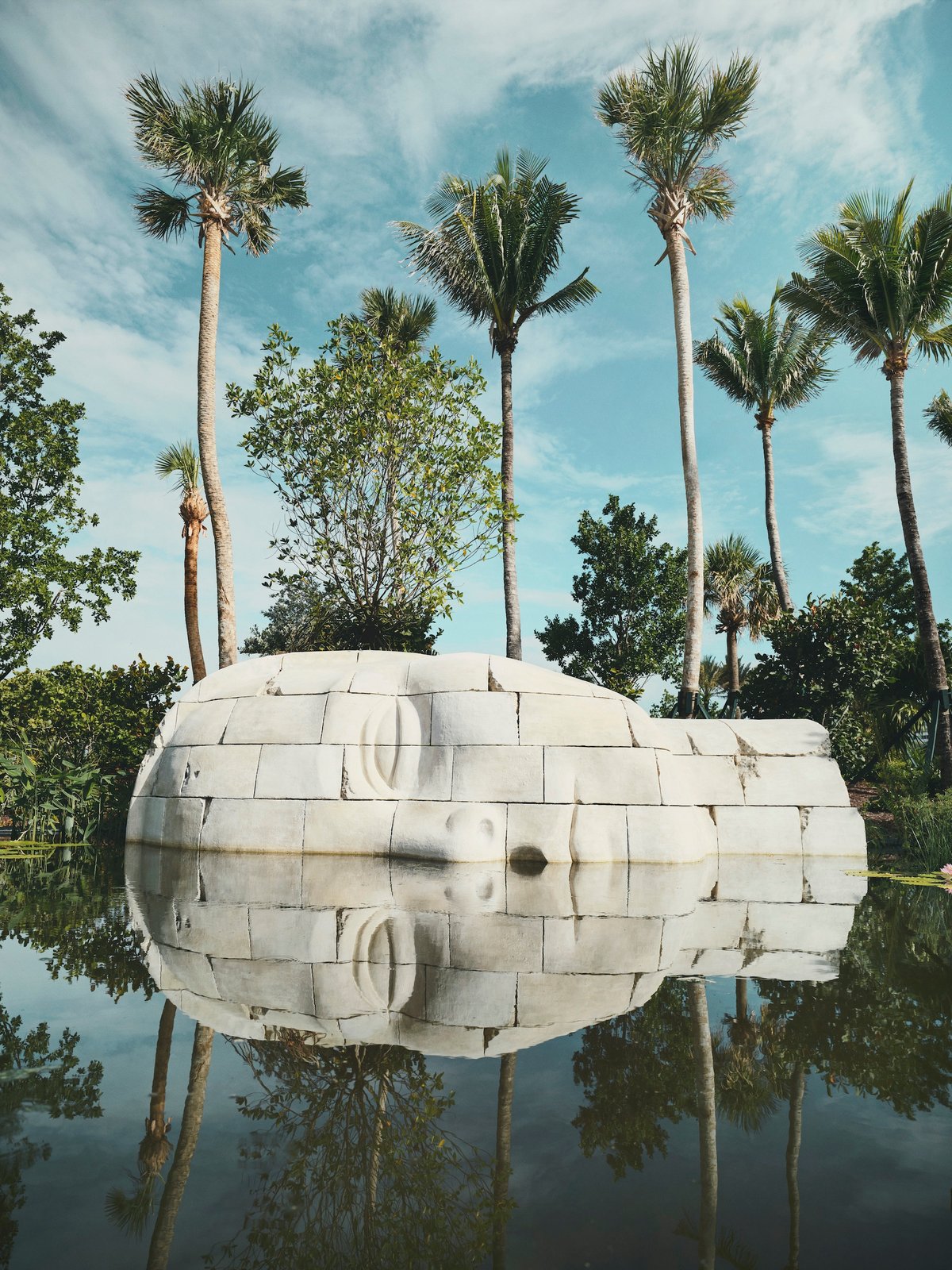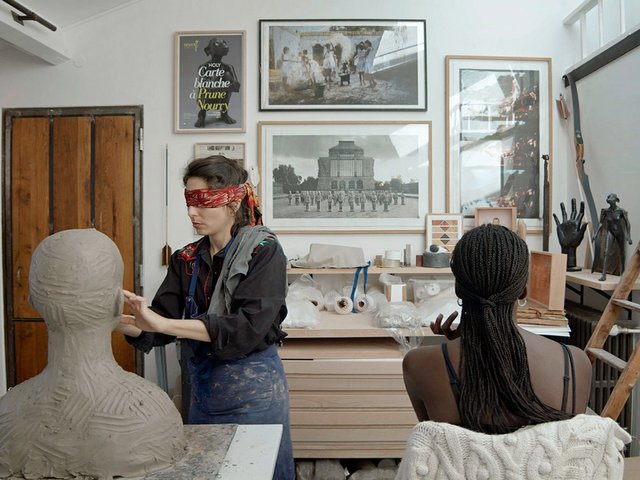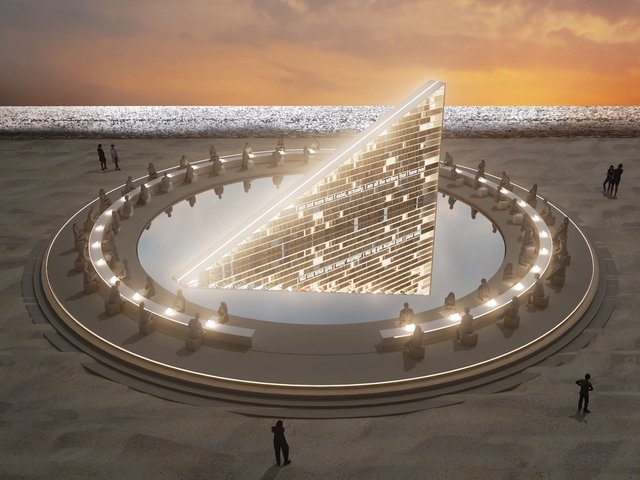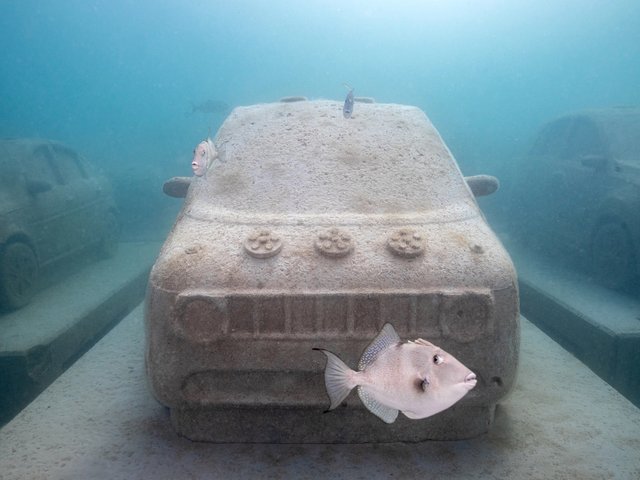There are few public monuments to women’s history in the US and even fewer celebrating these stories on a monumental scale. A new work in Miami Beach recognises the contributions of the US Coast Guard Women’s Reserve or Spars, formed to staff shore stations while men were sent to sea duty during the Second World War. (Their acronym is from the Coast Guard’s motto, “Semper Paratus—Always Ready.”) The sculpture by Prune Nourry has a half-face resting in water, its features completed by its reflection, with a mangrove tree sprouting from the side of this colossal head.
“I was inspired by the history of monumental sculpture, like Olmec heads and images of the Statue of Liberty, where you see just a piece of the head,” says the French-born artist, who works between New York and Paris. The interaction between the work and its garden is a collaboration with the Miami-based landscape architect Raymond Jungles. “There is something very poetic in the symbol of water and with the Coast Guard,” Nourry says. “It’s all about that fine line between the lands and the sea.”
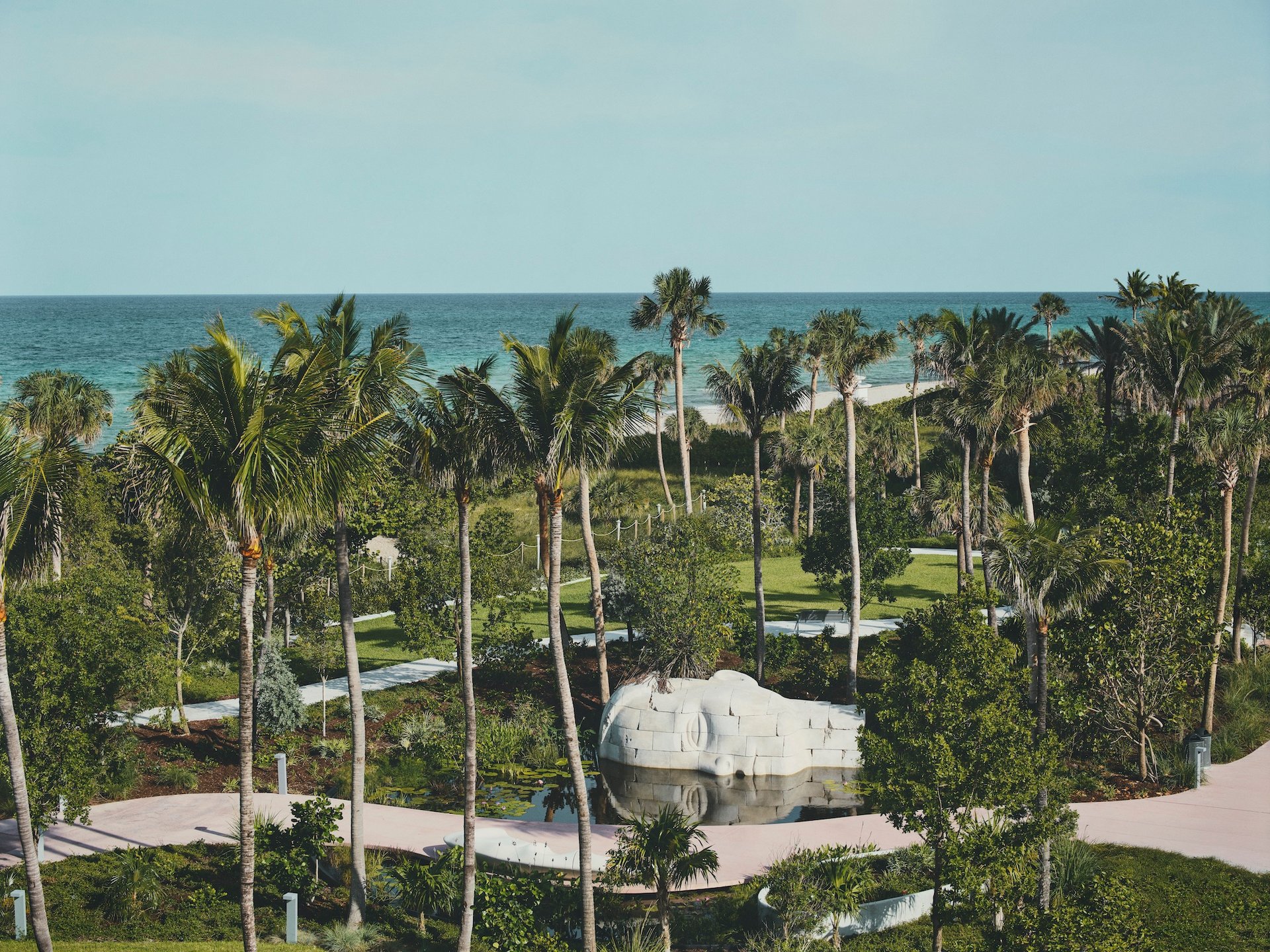
Prune Nourry's Reflection (2025) in situ at the new Ocean Terrace Park Photo by Thomas Loof
The 21.3ft piece will be unveiled on 30 October and is Nourry’s first public art project in the US. Titled Reflection, it is the centrepiece of the new waterfront Ocean Terrace Park in the North Beach neighbourhood and replaces a former parking lot. Nourry decided to honour Spars after learning about a nearby Coast Guard station.
“It’s very important for me that there is a local anchor,” she says. She connected with Spars historian Donna Vojvodich, who shared photographs of its members. “One portrait had a written note on it saying ‘Sincerely, Nellie’, and that got me. It was really like love at first sight between her face, her expression, the kindness of her eyes and I saw the sculpture in her.”
Yeoman Third Class Nellie Locust was a Cherokee woman born in Vinita, Oklahoma. She enlisted to bring her secretarial skills to Spars as part of what was known as the Sooner Squadron, which included a number of Indigenous women from Oklahoma. She began training in 1943 in Palm Beach, Florida, and later served at Fort Pierce and Miami’s Coast Guard Identification Office. While newspapers played up her Indigenous heritage through stereotypical language, she emphasised that she had an “average American girlhood” and was proud to serve in the military alongside other Native Americans. Following the war, she died at 26 in 1947 after a long illness.
Nourry received permission from Locust’s family to use her likeness. “What I’m sharing is a moment of her history that embodies a group of women who went through the same history,” she said. Nourry has regularly used sculpture to uplift overlooked women’s stories. Terracotta Daughters, started in 2012, was inspired by the Terracotta Warriors in its army of schoolgirls that addresses the absences left by China’s one-child policy. Next year, her first French public commission will debut at Paris’s new Saint-Denis–Pleyel metro station. Working with local women’s associations, she is sculpting palaeolithic Venus figures based on contemporary models to evoke these prehistoric depictions of women.
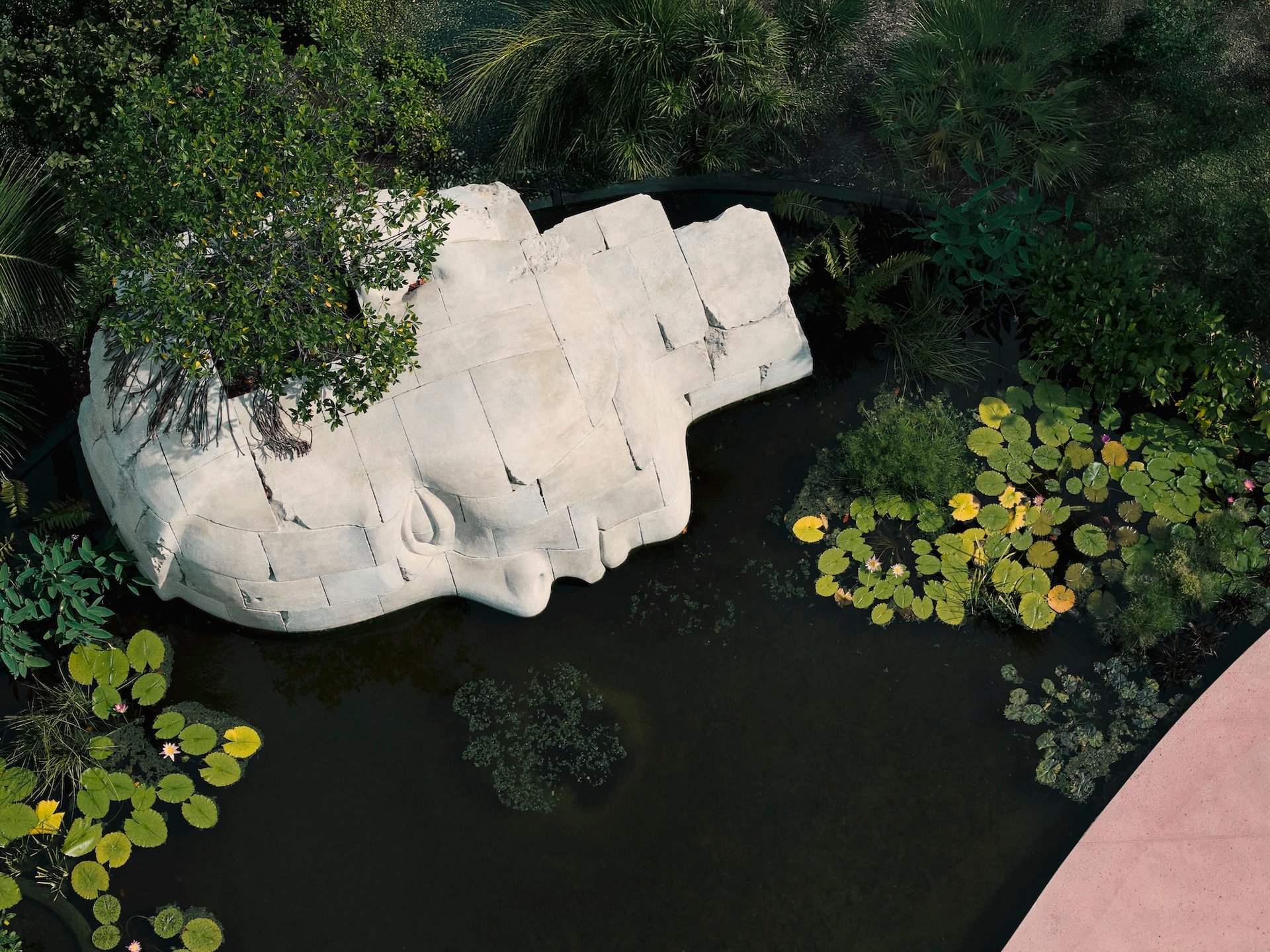
Prune Nourry, Reflection, 2025 Photo by Thomas Loof
Reflection most directly builds on Anima, a 2015 group show at Brooklyn’s Invisible Dog art centre for which Nourry worked on a massive earthen head emerging from the water, with a light flying around it in a forested space. She notes that both of these projects grapple with the question of “how do you give a soul to a sculpture”, with the plant life in Reflection making it a living thing.
“We envisioned a piece that would feel like a ruin overtaken by nature, with mangrove roots climbing over it,” says Jungles, the landscape architect. “Having a sculpture and water garden on a public beach is rare, and here they come together beautifully. The water mirrors the sky and landscape, completing the sculpture’s face and creating a place where anyone can pause and find something special.”


